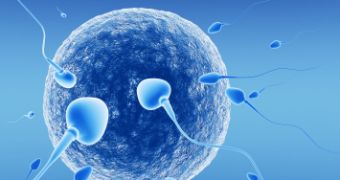A new paper published in yesterday's issue of the journal Proceedings of the National Academy of Sciences details the case of a 30-year-old infertile woman from Japan who has managed to become pregnant and has even given birth to a healthy baby boy thanks to a ground-breaking experimental treatment.
In their paper, the specialists who worked on this case say that, some time ago, the woman was diagnosed with primary ovarian insufficiency.
This condition boils down to the fact that a woman's ovaries do not produce as much estrogen as they should, and that they fail to release eggs on a regular basis.
In order to help the woman become pregnant, researchers removed one of her ovaries, treated it with hormones while outside the body and then reimplanted it close to her fallopian tubes.
The treatment sparked an increase in the production of follicles, i.e. structures responsible for egg formation and development.
“Human females have about 800,000 very small, primordial follicles at birth. Most of them remain dormant, and only about 1,000 start to grow each month. One of these reaches maturity each month to produce an egg each menstrual cycle,” explains researcher Aaron Hsueh with the Stanford University School of Medicine, as cited by EurekAlert.
“It's not known exactly how the follicles are selected for development, or why these follicles stop developing in women with primary ovarian insufficiency. But our treatment was able to awaken some of the remaining primordial follicles and cause them to release eggs,” he further details.
Once the ovary produced eggs, the specialists collected them and fertilized them in vitro. The resulting embryos were then implanted in the woman's body, and 37 weeks later, she successfully delivered a baby boy.
Presently, this experimental treatment has a fairly low success rate. Thus, just 5 of the 13 women who underwent this therapy produced viable eggs. What's more, merely 2 managed to get pregnant, and one failed to bring the pregnancy to term.
For the time being, researchers are unable to say whether or not this treatment could yield any results in women with causes of infertility other than primary ovarian insufficiency.

 14 DAY TRIAL //
14 DAY TRIAL //